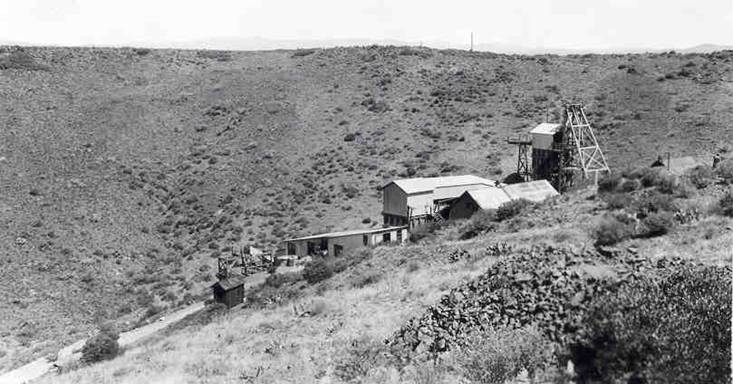The Ballad of the Hard Rock Miner
This song is inspired by "Deep Enough-A Working Stiff in the Western Mine Camps" - University of Oklahoma Press - by Frank Crampton. Many thanks to Ed Romanski of the Desert Caballeros Western Museum in Wickenburg, Arizona, for recommending this book to me. Ed is a transplanted New Yorker, like me, with his boots firmly rooted in Arizona's history. The heritage and history of Arizona needs to be discovered on foot, horseback, and in a 4-wheel drive truck. Many of the most interesting places are not marked on most maps. There is an abundant supply of accurate historical information that is readily available to the amateur historian: historical societies, foundations, archives, and libraries have been posting documents, maps, and photos on websites that are easily accessible. In addition, many books are available (both re-issues of out-of-print books and newly written) about Arizona mining history.
The historic maps of Arizona display dense clusters of mines and mining camps that were centers of intense activity in the period 1880-1930. Names like Chloride, Constellation, Stanton, Gillette, Tiptop, Humbug, and Bradshaw City were the centers intense prospecting, mining, processing, and community life. Many of these historic sites do not make the cut of "ghost town" tourist books. Many of them are located within 5 miles of highways and interstates. Others are easily accessible in high-clearance vehicles via forest service roads and jeep trails.
"Deep Enough" is essential reading for anyone wanting to know about the day-to-day life in the western mining camps in the early years of the 20th century. The song describes the life of a "hard-rock stiff" who works in a mine for ten days, and then moves on to the next mine. Miners of the day were very mobile, roaming the country from Butte, Montana to Bisbee, Arizona. The work rules of the day required a minimum of ten days work in order to draw a paycheck.
The song expresses the realities of a dangerous occupation, the swaggering pride of a highly skilled craftsman, and the pleasures that were available in the mining camps and towns along the way.

No comments:
Post a Comment